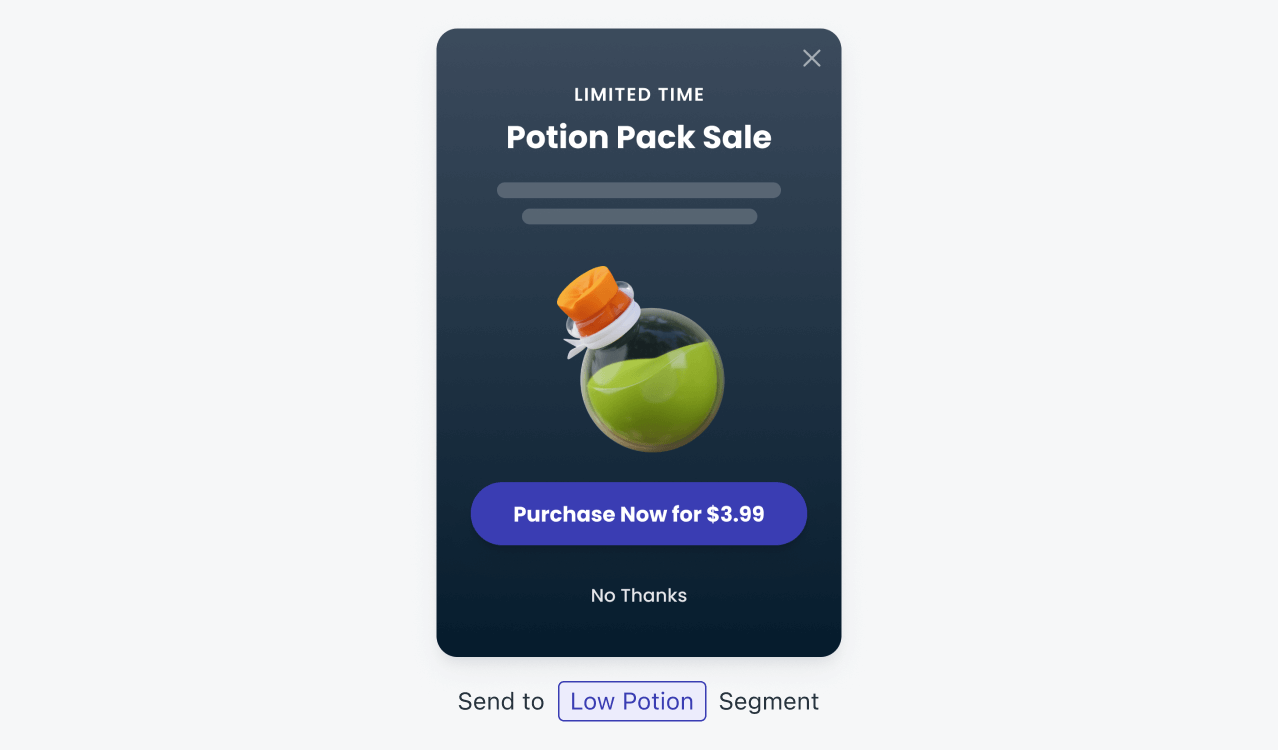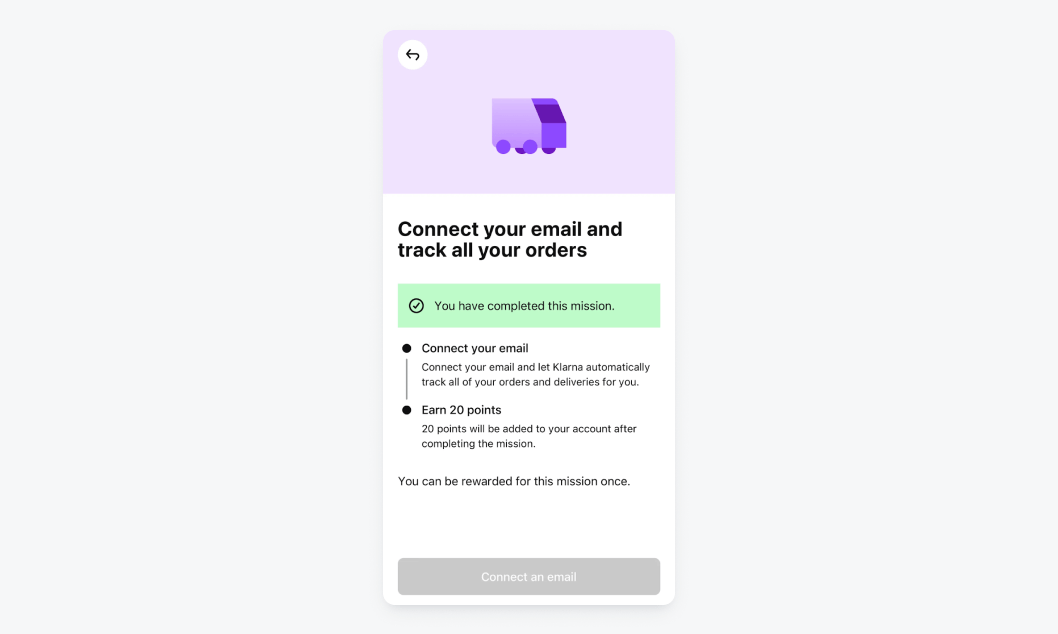Last year, we saw mobile app marketing continue to blossom with the release of increasingly intuitive notification features, new omnichannel messaging support, and some truly jaw-dropping results from mobile-first businesses successfully experimenting with both.
To see just a few of the most inspiring mobile app marketing use cases, take a look at what the 2023 Customer Engagement Award Winners got up to in 2023!
Ok, enough reminiscing. 2023 is so last year. Let’s take a peek at some of the mobile app trends we think will be the difference-makers in 2024.
Hybrid-Casual Gaming
Where casual mobile games are known for their free-to-play, often single-mechanism experiences, more intermediate (or “mid-core”) mobile games offer a layered gameplay experience with progressive reward systems. Hybrid-casual games are a crossbreed between these two models and, are continuing to see a spike in popularity going into the new year.
Post-pandemic attention spans dictated a new normal for mobile game engagement, as players have grown used to spending more time playing (an 80% increase between 2019 and 2021), become more invested in challenge-based progression, and have grown much more accepting of in-game purchases. The hybrid-casual model combines the effortless gameplay mechanics of casual games with the more nuanced approach to daily challenges, collectibles, events, and monetization formats of hardcore mobile games.
It’s no wonder many casual mobile game developers are beginning to lean on in-app purchases to diversify revenue streams from strictly in-app advertising. In 2022 alone, hybrid-casual games saw a 13% increase in downloads brining in nearly $1.5 billion in revenue. In 2023, titles like Attack Hole (Homa Games) and My Perfect Hotel (SayGames) reached over 11 million downloads each in the US.
As many hyper-casual game developers begin to shift towards this hybrid model, trending monetization models seem to be stepping further away from strictly ad-based revenue to more of a 60/40 split, with in-app purchases driving the lion’s share of app marketing revenue.

What’s motivating the hybrid-casual mobile gaming boom?
- To stay competitive in one of the most over-saturated industries around, mobile games are adapting to growth strategies that find new audiences. This means pulling in more serious players who find hyper-casual games too simplistic and not rewarding enough, broadening audience targeting and lowering acquisition costs in the process.
- Recent IDFA (Identifier for Advertisers) deprecation has made it more difficult for app marketers to track user behavior and interactions with in-app advertisements.
- The increased demand for customizable content, collectable items, and more ways for players to express their personal in-game journeys.
- Cross-promotional opportunities for developers with various genres of mobile games at varying difficulty levels.
In 2024, we expect to see more innovation, re-arranging existing formulas for success to create new engagement opportunities and sources of revenue. The golden goose may just be the game with hyper-casual aesthetics, mid-core mechanics, and a sophisticated reward system.
Low-Code/No-Code Development
The low-code/no-code movement shows no signs of slowing, with more opportunities than ever for non-technical app dreamers to become developers themselves. Of course, manual coding isn’t going anywhere any time soon, but beginner-friendly app design platforms and painless customer engagement solutions are paving the way for more mobile accessibility than ever before.
For mobile app marketing and omnichannel messaging specifically, we have a unique insight into this rising appetite for ease of use. Fast-growing mobile-first businesses don’t have the time or resources to spin up an app development team from scratch or re-train every new product marketing manager on push notification segmentation. With engagement solutions like OneSignal, impactful brand communication across channels becomes less stressful and more strategic.
We believe in the automated lifecycle messaging marketers love, the engagement tools product managers want, and the powerful SDKs developers need.
“We use OneSignal because it’s simple to use and there’s the possibility of scaling campaigns. If you have a variety of campaigns and markets, giving everyone access empowers you to scale. It’s quite user-friendly compared to other tools — even for people who have never used them before.”
Traci Trang
CRM Specialist, Taptap Send
Record Engagement With Apple Push Notifications
Web Push for iOS
Last year saw two new major updates to Apple push notifications and the way in which mobile-first businesses reach their users. First, the addition of web push notifications with iOS 16 unlocked massive opportunities for companies with a web-first model of communication. The ability to reach mobile users with carefully timed updates, product announcements, and abandoned cart reminders significantly evens the playing field for companies that haven’t yet invested in their own apps.
Web push notifications allow brands to bring users back to their mobile site, even after they have left, and more importantly, boost opt-in rates by requesting permissions after your users receive value from your site, rather than right away.
Moving into 2024, we expect to see an increasing number of companies leveraging this highly effective channel renowned for its quick time to value, high open rates, and ability to collect valuable first-party data.
As more and more companies embrace their own mobile apps, we expect to see web push for iOS play a major role in redirecting users from their mobile sites to effortlessly adding their app to user home screens.
Enhanced LiveActivities With iOS 17.2
With the release of iOS 16.1, Abehaviorpple gave apps a way to appear, in real time, on their users lock screens with dynamic content. Rather than a series of disconnected (and possibly irritating) notifications, Live Activities gave apps a powerful way to sustain user engagement with a persistent front-row seat to the information they cared about most. What was once only most useful for getting updates about your incoming Uber, quickly became adopted for a whole host of other creative use cases:
- Live sports scores, key plays, and game countdowns
- FinTech wallet updates, exchange rates, and stock prices
- Workout program feeds and leaderboards for fitness apps
- Live events, challenges, and competitive leaderboards for mobile games
- Travel app flight, train, or subway status tracking
In late 2023, Apple announced iOS 17.2, and with it a massive new opportunity for those using Live Activities. Rather than requiring users to have a particular app open for the Live Activity to be created and displayed on their devices, these dynamic notifications can now be triggered from traditional Apple push notifications. The ability to present personalized, live updates on your users’ lock screens without needing your app open previously will drive engagement to new heights in 2024 as more and more apps figure out the best way to leverage them.
Making Email Mobile
OneSignal helps drive omnichannel messaging for one in every five apps, which means we have a constant eye on how different channels are driving every use case imaginable. And the one channel we’re seeing make the biggest comeback? Email.
As more and more apps look to remain competitive and unify their engagement campaigns, we are seeing what was formerly a marketing “legacy channel” being reutilized alongside other mobile-first channels for a more relevant and well-rounded user experience. Remember, a siloed mobile messaging strategy makes for a fractured user experience. Email has both the content capacity and established user trust to make it a high-impact (and affordable) extension of your current cross-channel engagement strategy.
We’ve seen resale marketplace apps leverage email with in-app messages to facilitate user-to-user communication and help newly onboarded users painlessly create their first listing. We’ve seen FinTech apps use email to add invaluable context as to why their push notifications are requesting account verification. These are just scratching the surface of the ways in which email is being repurposed to fit, support, and transform the way in which mobile-first businesses reach their users.

As 2024 picks up steam, expect to see email treated less as a web-based marketing megaphone and more as an auxiliary mobile channel. With powerful ways to segment your email audience, optimize emails for mobile, and new ways to boost email brand visibility, we will be paying close attention to see how this trend evolves.
We encourage you to read our guide on the drawbacks of keeping email separate from your other mobile channels for a problem/solution approach to keeping this traditional marketing channel relevant in 2024!
Stay One Step Ahead in 2024 With OneSignal
We make it our business to understand what yours needs most to scale, especially as the mobile marketing landscape re-arranges itself on a monthly basis. When you’re ready to chase down each of these 2024 mobile app trends and see if they’re a viable option to increase your retention rates, we’ll help get you there.
Interested in the hybrid-casual gaming craze? Our guide to creating irresistibly engaging in-game challenges is a great place to start.
Ready to capitalize on the newest Apple push notifications? We have over 20 unique examples of apps using Live Activities to enrich their UX for inspiration.
If you’re beginning to revitalize your email efforts, our guide on optimizing emails for dark mode is one of the best ways to satisfy a mobile-friendly audience who expects custom control.
For all you low-code/no-coders out there looking for the fastest way to start engaging with your mobile users, we’d love to show you how easy it is with OneSignal…
Give it a Try for Free



